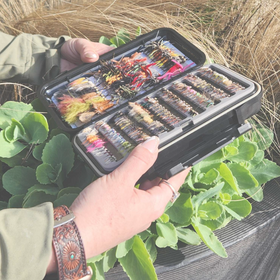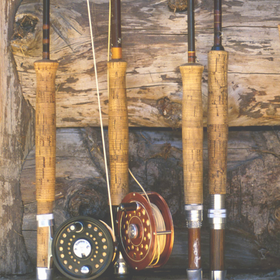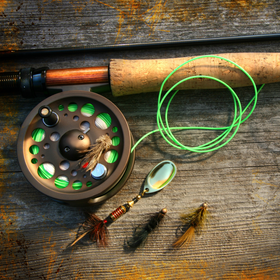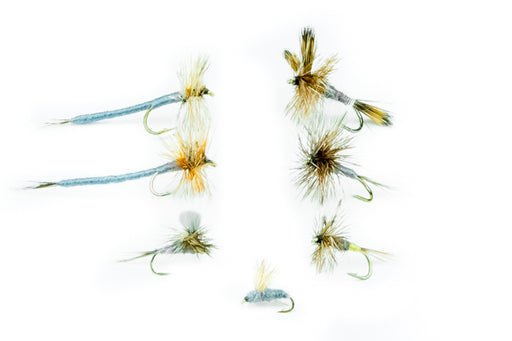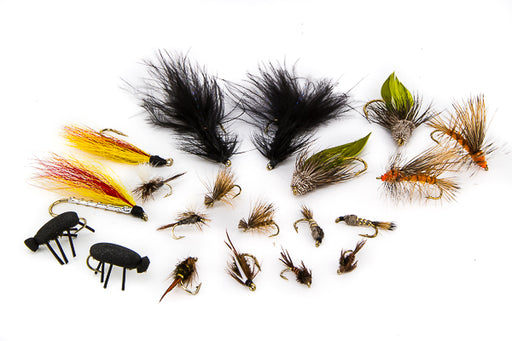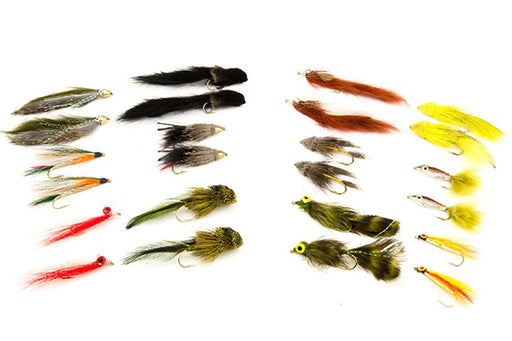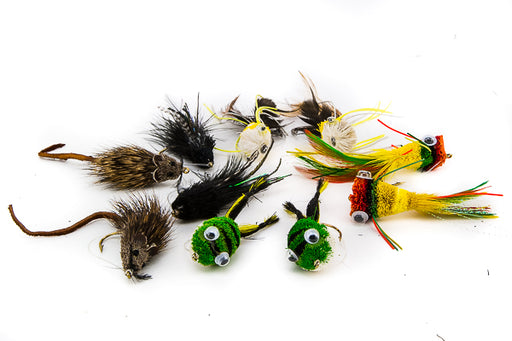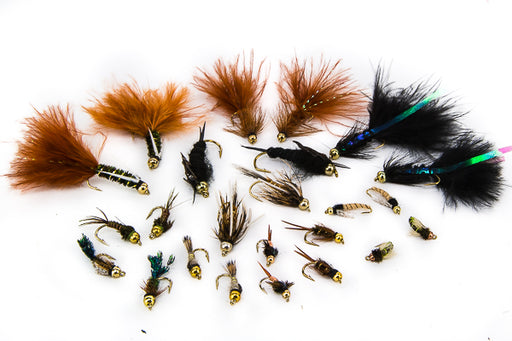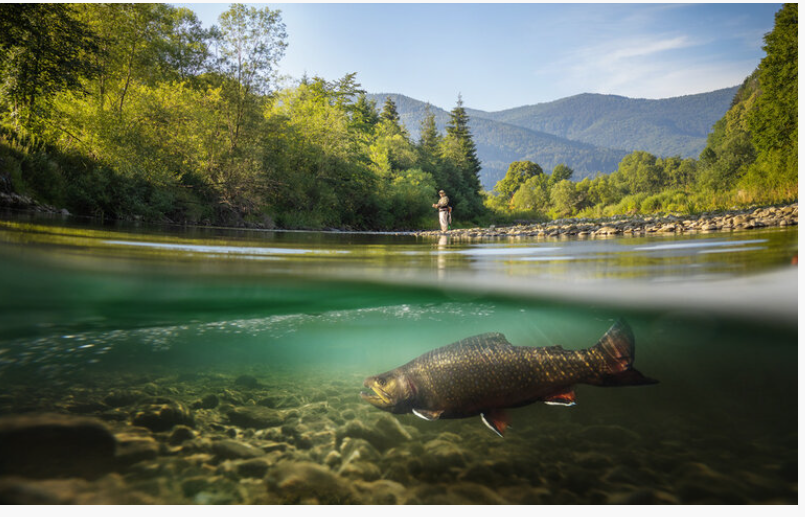
Dry Fly vs. Nymph: How to Choose the Right One for the Day
Dry Fly vs. Nymph: How to Choose the Right One for the Day
Fly fishing gives you endless options—but when it comes to dry flies vs. nymphs, the choice can make or break your day on the water. Dry flies offer visual excitement and surface strikes, while nymphs will consistently produce fish below the surface.
So how do you decide what to tie on? Here's a simple breakdown that’ll help you fish smarter—backed by decades of experience and thousands of trout in the net.
🎣 What Is a Dry Fly?

A dry fly floats on the surface of the water and imitates adult insects like mayflies, caddisflies, or terrestrials.
It’s the most visually rewarding way to fish—watching a trout rise to smash a tiny fly never gets old.
Dry flies are best when:
- You see fish rising
- There's a visible hatch
- Water is clear and calm
- You want to cover the surface efficiently
Some classic dry fly patterns:
🐛 What Is a Nymph?

Nymphs imitate immature aquatic insects—stoneflies, mayflies, midges—that live beneath the surface and drift with the current.
Because most trout feed below the surface 80–90% of the time, nymphs are often the most productive flies.
Use nymphs when:
- There’s no surface activity
- Water is cold or high
- You want to fish deep runs or pockets
- You're looking to catch fish consistently
Popular nymphs from our shop:
🎯 When Should You Use Each?
Use dry flies when fish are looking up—especially during visible hatches or warm summer evenings. Fish lighter tippet, longer leaders, and make gentle presentations.
Use nymphs when nothing’s happening on the surface, or when targeting deeper holding water. Dead-drift them under an indicator or tight-line them for a more active presentation.
Often times you can switch between the two during a day of fishing. Look for rises and/or hatches. Many hatches only last a short time, and when that activity has ended returning to nymphs is often the thing to do.
🧪 Dry-Dropper: The Best of Both Worlds
Why not use both?
A dry-dropper rig puts a dry fly on top and a small nymph below it. You can attract surface strikes and also catch fish feeding subsurface—two layers of action on one cast.
Pair a bushy dry like a Chubby Chernobyl with a tungsten nymph beneath, and you’ll cover more water more efficiently.
❓ FAQ: Dry Fly vs. Nymph
Q: What is the difference between a dry fly and a nymph?
A: A dry fly floats and imitates adult insects; a nymph sinks and imitates underwater insect stages.
Q: When should I fish dry flies?
A: During visible hatches, when trout are rising, or in calm, clear water.
Q: Are nymphs better for beginners?
A: Yes. Nymphs are more forgiving and effective year-round, even without visible surface activity.
Q: Can I use both dry flies and nymphs at the same time?
A: Yes—use a dry-dropper rig to fish both water columns simultaneously.
🛒 Ready to Fish Smarter?
Check out our full selection of:
Need help picking the right flies for your local water? Contact us here and we’ll point you in the right direction—no upsell, just good advice.


